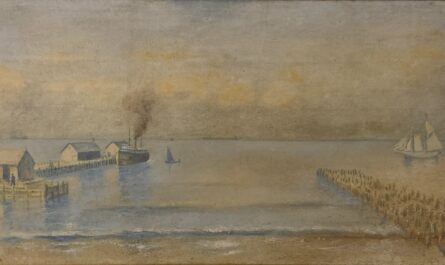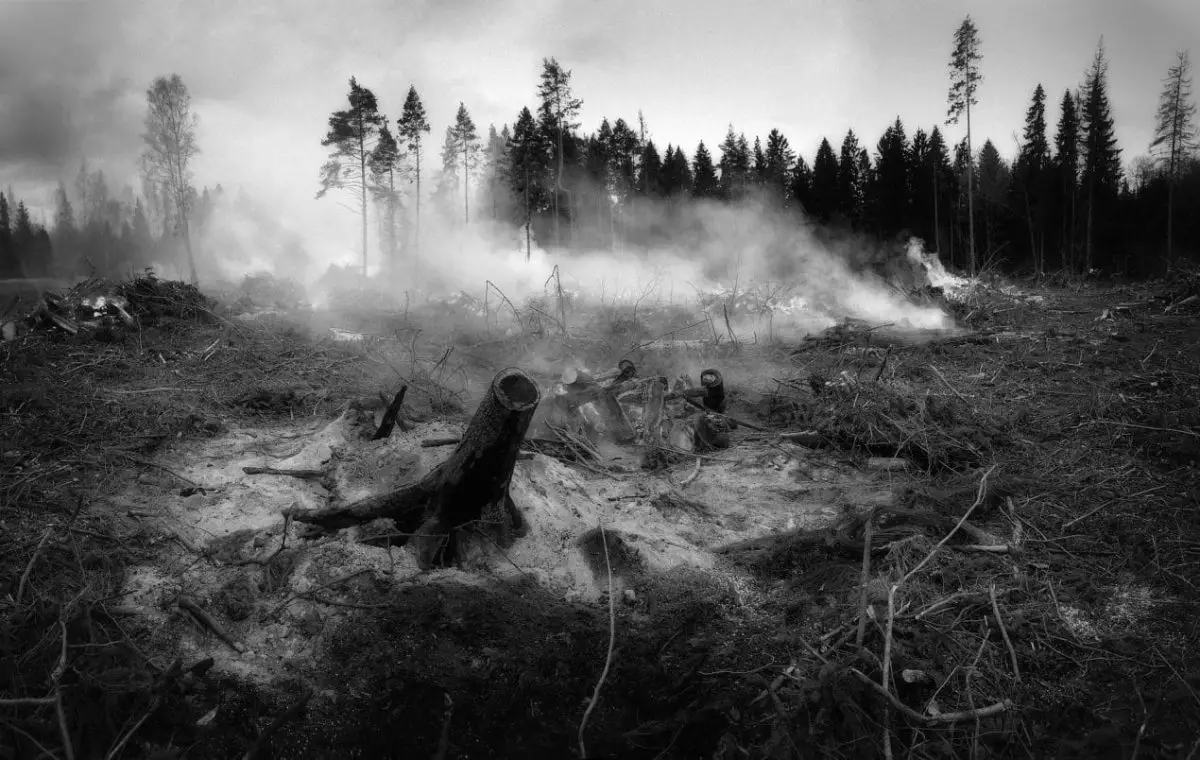White Rock, a limestone formation jutting out of Lake Huron, has been a sacred site, a boundary marker, and even a bombing target. Discover the multifaceted history of this Michigan landmark.
Table of Contents
Indigenous Significance
The Anishinabeg, Indigenous Peoples of Michigan, view White Rock as a sacred site. The rock was much larger than it appears today, mostly underwater as of 2022. The Anishinabeg ensured that fresh game and food items were placed on the site as an offering to Gitchie Manitou or Great Spirit. This was a token of thanks for the bounty and richness of the peninsula.
According to tribal historians, the Anishinabeg have been making offerings at White Rock for generations, a practice that continues to this day.
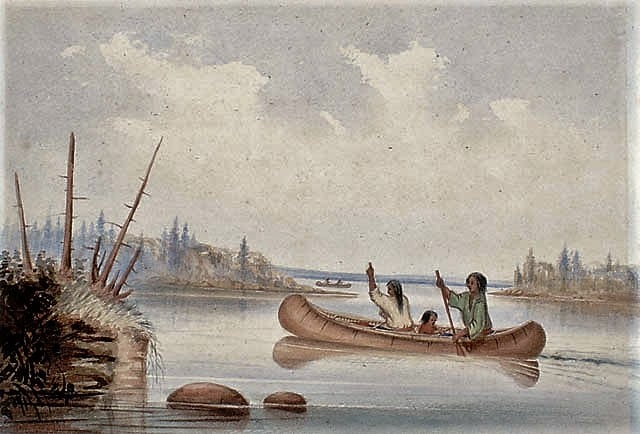
Listen to This Story on the End of the Road in Michigan Podcast
Henry Schoolcraft Points Out White Rock
Henry Schoolcraft, in his Survey of the Upper Great Lakes with Lewis Cass in 1820, documented the White Rock and its prominence.
“White Rock, an enormous detached mass of transition limestone standing in the lake at the distance of half a mile from the shore. This is an object looked upon as a kind of milestone by the voyageurs and is known to all canoe and boat travelers of the region. The White Rock is an object which had attracted the early notice of the Indians who are the first to observe the non conformities in the appearances of the country-, and it continues to be one of the places at which offerings are made.”
Henry Schoolcraft 1820
White Rock was so well known as a landmark that it was utilized as a boundary marker. It defined the territory ceded by Ottawa, Chippewa, Wyandot, and Potawatomi with the Treaty of Detroit in 1807. The land was denoted by a line from White Rock, southwest to a point roughly east of St. John’s, then south of Fort Defiance on the Maumee River in Ohio.
Schoolcraft’s documentation played a significant role in attracting settlers and researchers to the area, further embedding White Rock’s importance in Michigan’s history.
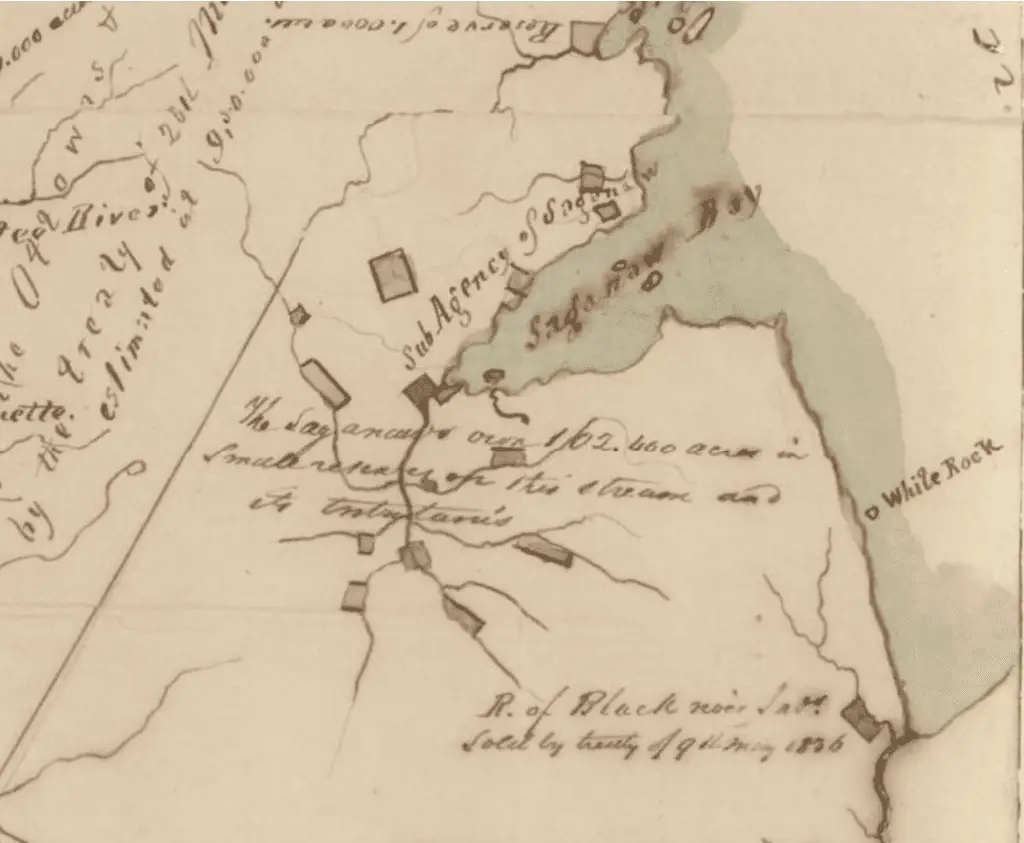
A Map of the Acting Superintendency of Michigan. Drawn by Henry R. Schoolcraft in 1837 – Indian Settlements in Michigan Thumb 1837
Pioneer Settling of White Rock City
Edward Petit was the first white settler in Huron County. He opened a trading post within sight of White Rock and later moved to the growing village.
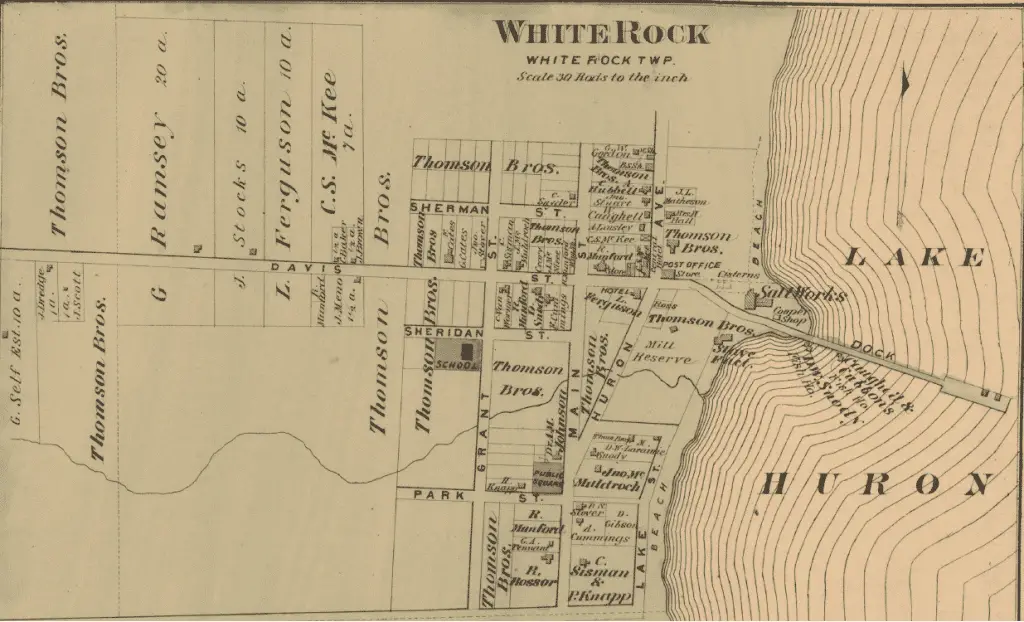
By the 1830s, White Rock City was a fishing and lumbering port and commerce hub. The city grew enough to warrant a Post Office in 1859, which operated until 1907. On a city directory published by Beers in 1875, White Rock had the following businesses listed.
- Two Building and Carpentry Firms
- Two Fishing Companies
- Two Hotels
- Two Dry Goods Stores
- One Lumber Mill
- A Wagon and Carriage Manufacturing and Blacksmith Shop
- One Salt Block Operation
- One Physician
- One Stave Factory
- One Cooper Shop
In 1871, the entire community was destroyed in the Great Fire. The fire turned out to be a fatal blow to the town. As a result, it was never rebuilt to the size it once was. The fire not only decimated the town but also led to a shift in the local economy, with many residents moving to neighboring areas for better opportunities.
The Lighting Strikes of White Rock
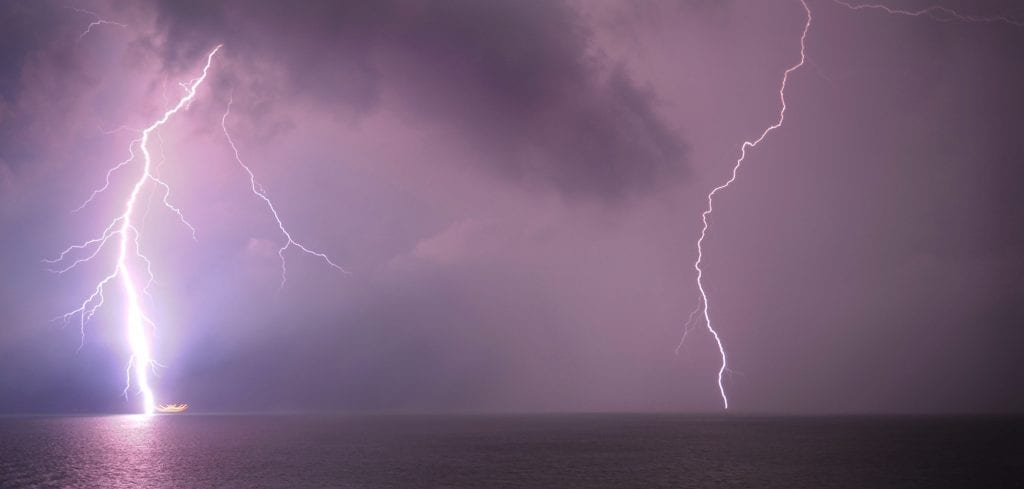
Local lore tells a story from around 1860 when a group of settlers decided to have a square dance on White Rock. Local Indians warned them not to have this dance, as the White Rock was sacred. Disregarding the warnings, two sets of square dancers piled onto the White Rock from canoes. One man ignored the Indians’ warning and remained floating in the water nearby. Suddenly, as they danced, a lightning bolt struck the White Rock. It killed all the dancers, leaving only the nearby man to tell of the terrible tragedy.
While this tale has been passed down through generations, no concrete evidence has been found to substantiate it. However, it remains a cautionary tale about respecting the sacredness of the land.
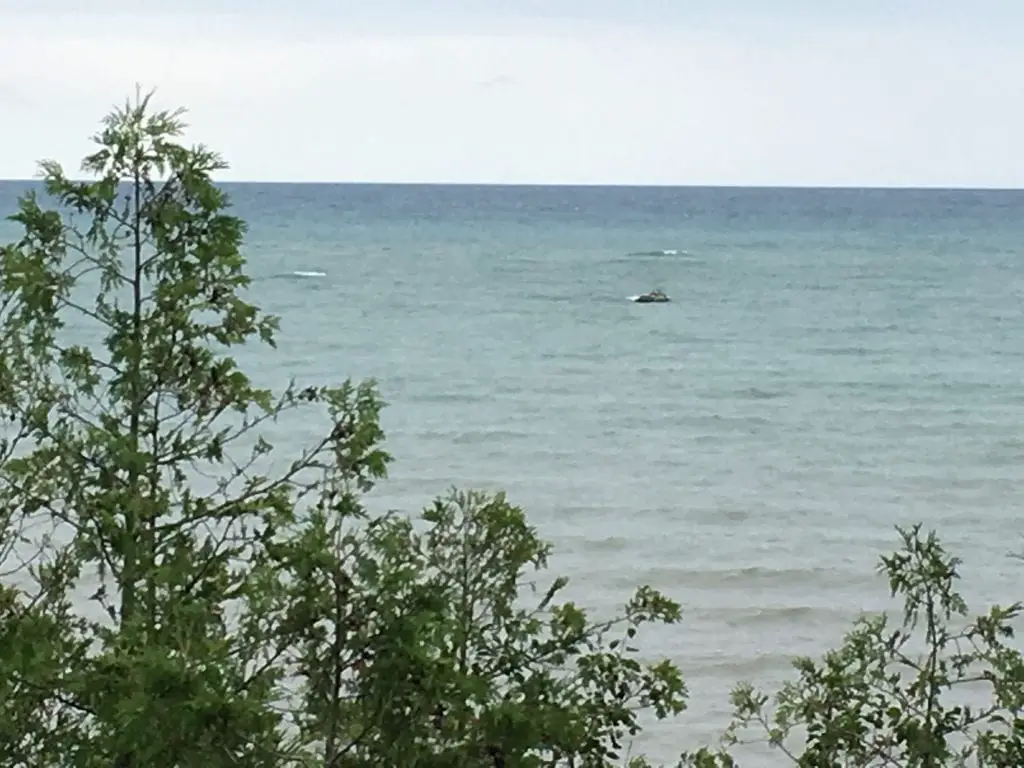
Today, White Rock is almost awash by the high levels of Lake Huron. The size has shrunk, too. With erosion and lightning strikes, the rock is about 12 feet. The landmark was a training target for bombing practice during World War II. Thus, it’s no wonder that the famous rock is a smaller shadow than it was 100 years ago.
It is unknown if conservation efforts are underway to preserve what remains of this iconic landmark, making it a point of interest for historians and tourists alike.
Sources
- Detroit, in the Territory of Michigan Articles of a Treaty
- A Map of the Acting Superintendency of Michigan, 1837 – MSU Map Collection
- The Odd History of “White Rock, Michigan.
MLA Citation
Thumbwind Publications LLC. “The Evolving Story of White Rock: A Sacred Landmark in Michigan’s Thumb.” Thumbwind, 12 Oct. 2023, https://thumbwind.com/2023/10/12/white-rock-michigan-thumb/.



